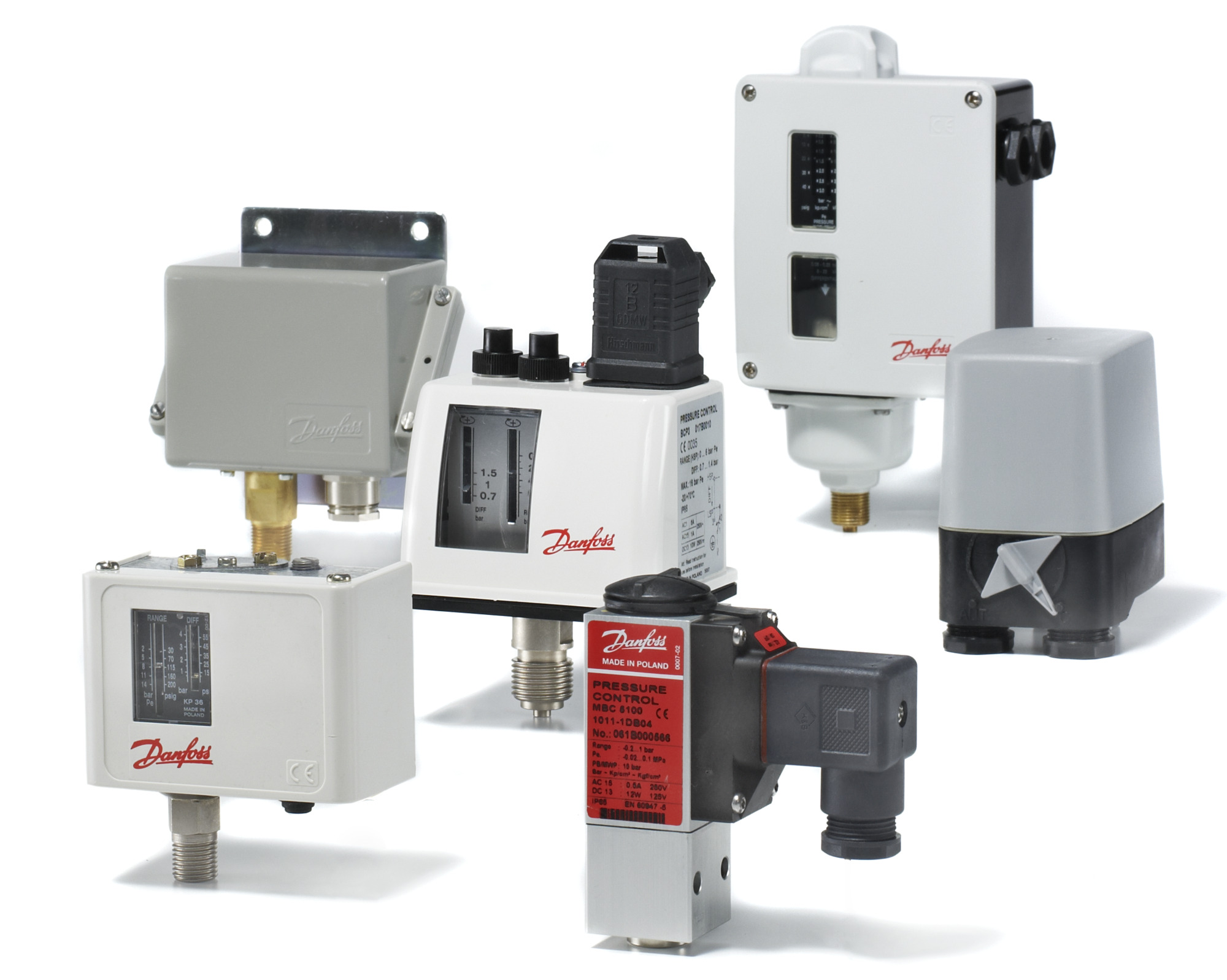Pressure Switches
An electronic pressure switch offers a multitude of advantages in comparison to a mechanical pressure switch.These advantages include greater accuracy, freedom from contact wear out, excellent long-term stability, simpler operation and a high number of switching cycles, and many more.

Shows 7 product(s)
060-315166
Pressure switch, CAS136
Regulation range [bar] Pe: 0 - 10, Differential [bar]: 0.2, Pressure connection type: G, Pressure connection size: 1/4, Enclosure rating IP: IP67, Max. Working Pressure [bar]: 22
060-316066
Pressure switch, CAS143
Regulation range [bar] Pe: 1 - 10, Differential [bar]: 0.2 - 0.6, Pressure connection type: G, Pressure connection size: 1/4, Enclosure rating IP: IP67, Max. Working Pressure [bar]: 120
060-315066
Pressure switch, CAS133
Regulation range [bar] Pe: 0 - 3.5, Differential [bar]: 0.1, Pressure connection type: G, Pressure connection size: 1/4, Enclosure rating IP: IP67, Max. Working Pressure [bar]: 10
060-316266
Pressure switch, CAS147
Regulation range [bar] Pe: 6 - 60, Differential [bar]: 1 - 3, Pressure connection type: G, Pressure connection size: 1/4, Enclosure rating IP: IP67, Max. Working Pressure [bar]: 120
060-315266
Pressure switch, CAS137
Regulation range [bar] Pe: 6 - 18, Differential [bar]: 0.3, Pressure connection type: G, Pressure connection size: 1/4, Enclosure rating IP: IP67, Max. Working Pressure [bar]: 27
060-315366
Pressure switch, CAS139
Regulation range [bar] Pe: 10 - 35, Differential [bar]: 0.6, Pressure connection type: G, Pressure connection size: 1/4, Enclosure rating IP: IP67, Max. Working Pressure [bar]: 53
060-316166
Pressure switch, CAS145
Regulation range [bar] Pe: 4 - 40, Differential [bar]: 0.8 - 2.4, Pressure connection type: G, Pressure connection size: 1/4, Enclosure rating IP: IP67, Max. Working Pressure [bar]: 120
